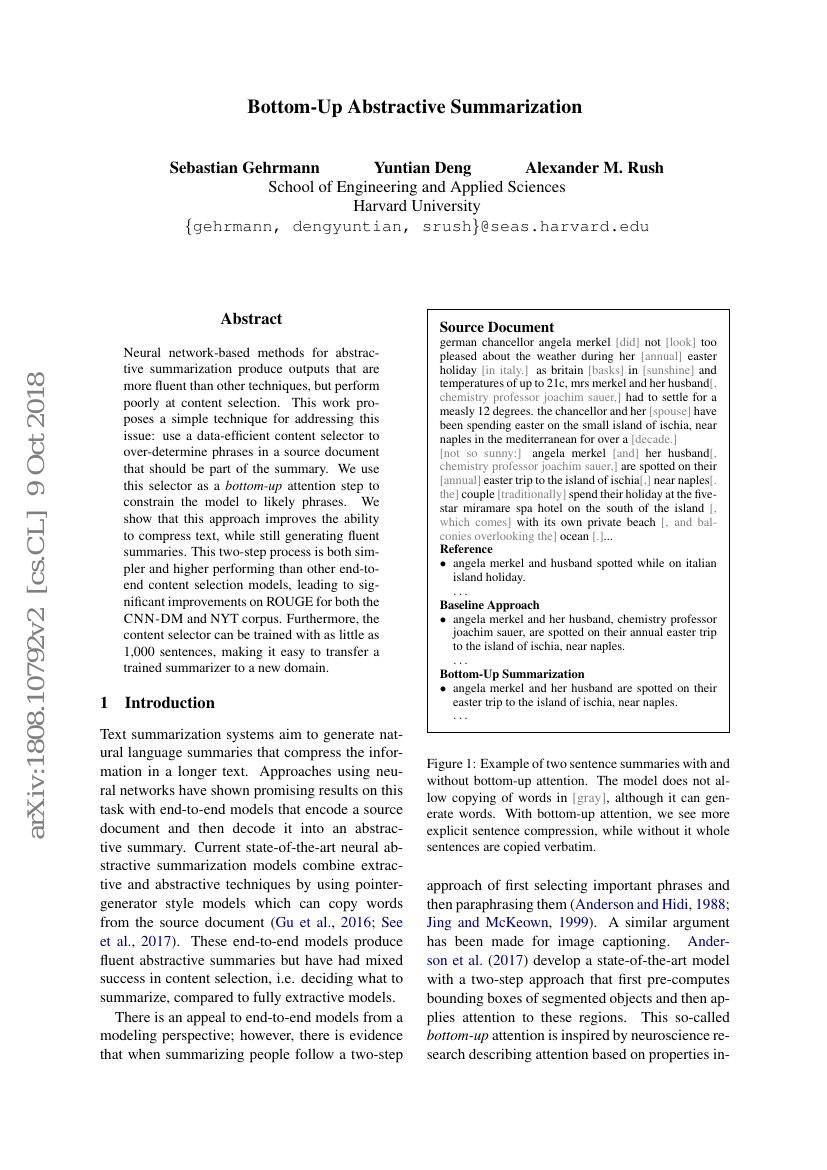Command Palette
Search for a command to run...
Sebastian Gehrmann; Yuntian Deng; Alexander M. Rush

Abstract
Neural network-based methods for abstractive summarization produce outputs that are more fluent than other techniques, but which can be poor at content selection. This work proposes a simple technique for addressing this issue: use a data-efficient content selector to over-determine phrases in a source document that should be part of the summary. We use this selector as a bottom-up attention step to constrain the model to likely phrases. We show that this approach improves the ability to compress text, while still generating fluent summaries. This two-step process is both simpler and higher performing than other end-to-end content selection models, leading to significant improvements on ROUGE for both the CNN-DM and NYT corpus. Furthermore, the content selector can be trained with as little as 1,000 sentences, making it easy to transfer a trained summarizer to a new domain.
Code Repositories
Benchmarks
| Benchmark | Methodology | Metrics |
|---|---|---|
| abstractive-text-summarization-on-cnn-daily | Bottom-Up Summarization | ROUGE-1: 41.22 ROUGE-2: 18.68 ROUGE-L: 38.34 |
| document-summarization-on-cnn-daily-mail | Bottom-Up Sum | PPL: 32.75 ROUGE-1: 41.22 ROUGE-2: 18.68 ROUGE-L: 38.34 |
| multi-document-summarization-on-multi-news | CopyTransformer | ROUGE-1: 43.57 ROUGE-2: 14.03 ROUGE-SU4: 17.37 |
| multi-document-summarization-on-multi-news | PG-BRNN | ROUGE-1: 42.80 ROUGE-2: 14.19 ROUGE-SU4: 16.75 |
Build AI with AI
From idea to launch — accelerate your AI development with free AI co-coding, out-of-the-box environment and best price of GPUs.